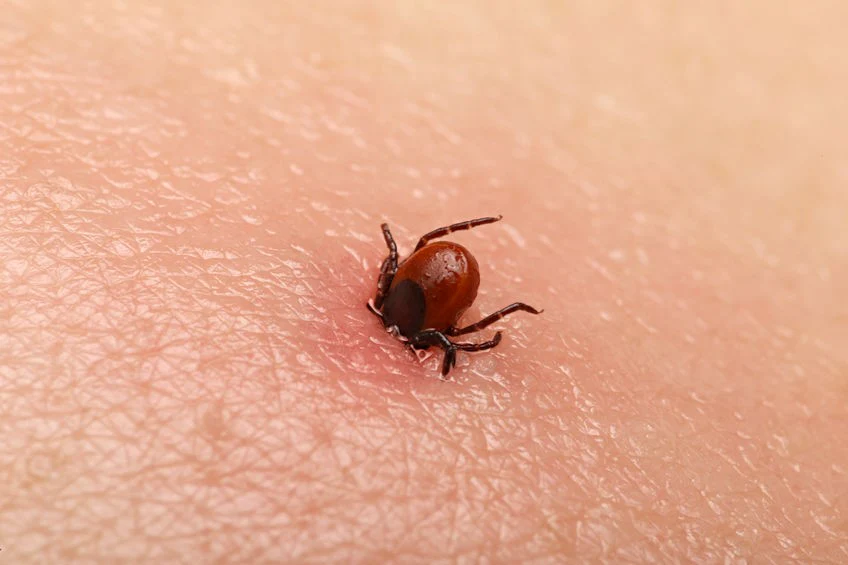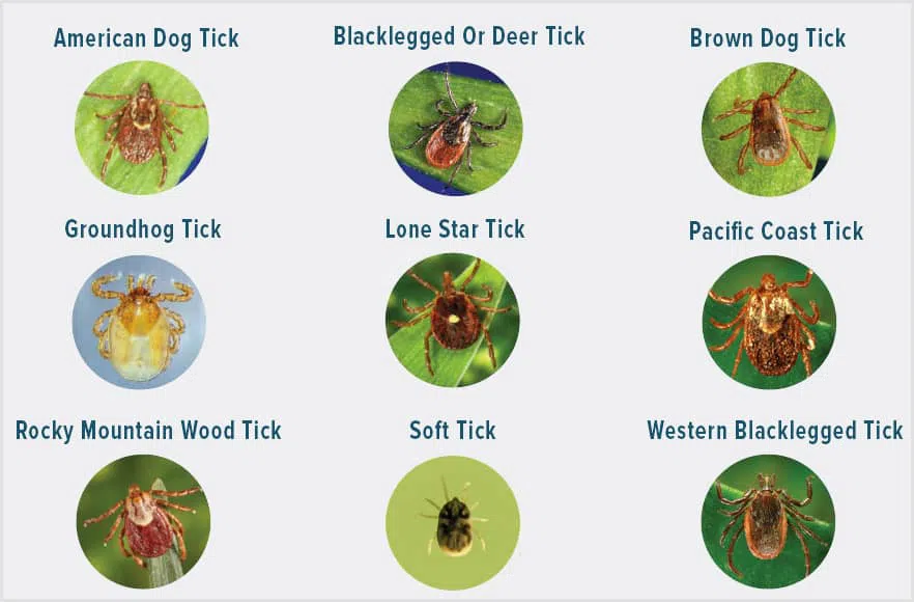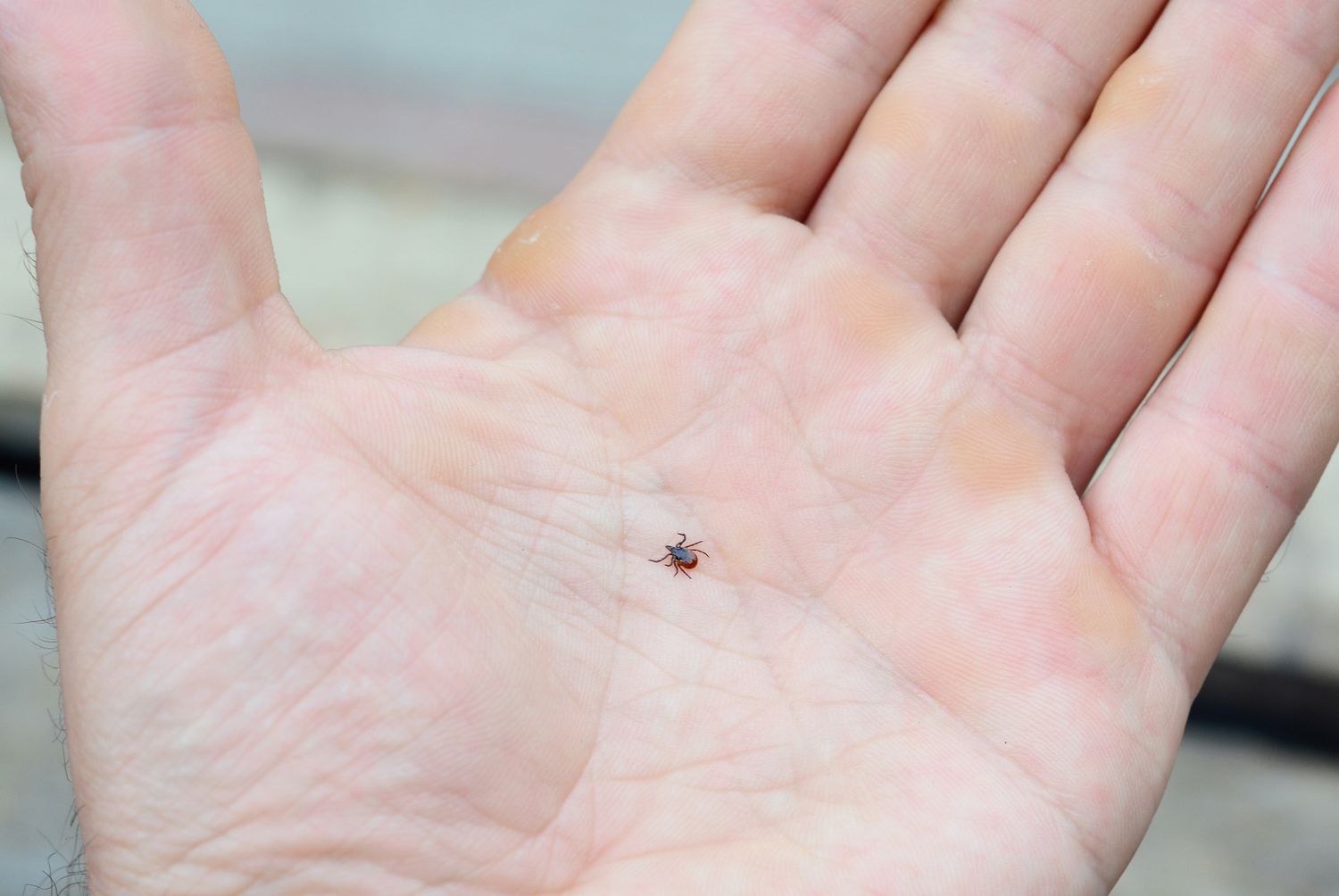Tick Treatments in Florida:
Exterminator Services for Boca Raton, Deerfield Beach, and Delray Beach
Florida’s climate, brimming with warm days and mild winters, invites not just sun-seeking residents and visitors but also a diverse range of pests. Among these are ticks, small external parasites that latch onto warm-blooded hosts, including pets and occasionally humans. Ticks can transmit various ailments and create discomfort for both animals and people. In Boca Raton and surrounding areas such as Deerfield Beach and Delray Beach, the consistent mild temperatures and humid conditions bolster tick populations, turning a stray sighting into a potential infestation if left unchecked. This service page clarifies how ticks flourish in Florida, which species are most common, how to recognize their presence, and why reaching out to a professional tick exterminator can help you reclaim peace of mind.
How Ticks Thrive in Florida’s Environment

- Mild Winters
In many regions of the country, ticks face cold winters that inhibit their breeding cycles and limit their survival. Florida’s subtropical climate, on the other hand, features mild winter months that barely drop below the threshold required to push ticks into dormancy. As a result, ticks often stay active all year, reducing or eliminating any seasonal reprieve property owners might expect in cooler climates. - High Humidity and Frequent Rains
Ticks rely on a certain level of moisture to develop successfully in the environment. Areas with frequent rainfall and high humidity—like coastal Florida—grant ticks the microhabitats they need in shaded yards, leaf litter, or tall grass. When these spots remain damp, ticks can stay in questing mode, ready to latch onto any nearby host. - Abundant Wildlife and Pets
Warm-blooded hosts are crucial for tick survival. Florida’s varied wildlife—squirrels, raccoons, opossums, feral cats, and more—can carry ticks into suburban or urban zones. Additionally, dogs and cats that venture outside or visit local parks often pick up ticks in the grass, then bring them home, creating a fresh indoor staging ground for a tick outbreak. - Minimal Seasonal Dormancy
Seasonal dormancy typically reduces tick activity during frigid months, but that rarely occurs in Florida. Because cold spells are short and not particularly intense, ticks may merely slow their activity briefly before bouncing back once mild conditions return. This lack of downtime lets populations remain relatively steady throughout the year. - Growing Suburban Landscapes
Busy suburbs and continuously expanding residential communities in Boca Raton, Deerfield Beach, and Delray Beach blend open green spaces with dense housing. Ticks hidden in shrubs, under decks, or in shared yards can spread quickly, especially if owners or HOAs do not coordinate regular yard maintenance or pest control.
The Common Ticks of Florida
- American Dog Tick
Sometimes found in grassy fields or low-lying areas, the American dog tick (Dermacentor variabilis) targets dogs in particular but can also bite humans. It can transmit illnesses like Rocky Mountain spotted fever if infected. These ticks have distinctive patterned bodies and a medium to large size. - Brown Dog Tick
True to its name, this brownish species (Rhipicephalus sanguineus) thrives around canines. It can multiply indoors if it infiltrates a house or kennel, setting up hidden breeding sites near baseboards, behind furniture, or around dog bedding. Despite the name, brown dog ticks will feed on humans if dog hosts are not accessible. - Lone Star Tick
Identified by the single white dot on the adult female’s back, the lone star tick (Amblyomma americanum) is known for biting humans and can transmit pathogens like ehrlichiosis. These ticks favor wooded and bushy zones, so yards bordering wild areas in Delray Beach or Deerfield Beach may see more frequent lone star activity. - Blacklegged Tick (Deer Tick)
Famous for carrying Lyme disease in some parts of the country, blacklegged ticks (Ixodes scapularis) do exist in Florida but are somewhat less associated with Lyme transmissions than in northern states. Still, they remain a concern, dwelling where deer populations and thick vegetation overlap. - Gulf Coast Tick
Another tick species found in Florida, the Gulf Coast tick (Amblyomma maculatum) typically inhabits coastal or wetter grasslands. It can bite people or animals and transmit conditions like Rickettsia parkeri. Residents near water or marshy habitats might encounter these ticks in their yards.
Dangers and Reasons for Tick Treatments
- Disease Risk
Ticks can transmit a variety of diseases to humans and pets. Illnesses like Rocky Mountain spotted fever, ehrlichiosis, or others can produce severe symptoms if not identified and treated promptly. Even if the probability of contracting disease from a tick bite is low, the risk remains significant enough to warrant consistent prevention. - Pet Distress
Pets harassed by ticks experience itching, possible allergic reactions, and, in serious cases, anemia from feeding ticks. If multiple ticks latch onto a single pet, that animal can develop further complications, sometimes leading to costly veterinary bills or extended discomfort. - Indoor Invasions
Certain ticks, like the brown dog tick, can settle indoors if they hitch a ride on a dog. They multiply rapidly in quiet corners, emerging to feed, which troubles property owners who discover ticks on floors or walls. This scenario disrupts daily life, especially if pets share living spaces. - Quality of Life
Repeated tick encounters—discovering them on clothing or ankles after stepping outside—erode the sense of enjoyment residents gain from Florida’s mild weather. Effective tick treatments restore confidence when venturing into lawns, beaches, or local trails. - Persistent Challenges
Ticks progress through four life stages (egg, larva, nymph, adult). Some stages can hide in the yard for months, reemerging unexpectedly. A single incomplete control measure can fail if an overlooked pupa develops into a new wave of ticks. Hence, a thorough, multi-step strategy from an experienced exterminator is crucial for lasting relief.

Signs of Tick Infestations
- Pet Scratching or Grooming
Dogs and cats might scratch intensely or bite at specific spots if ticks latch onto them. Check for embedded ticks around ears, under collars, or near the tail base. Vigorous grooming or shaking could hint at persistent tick annoyance. - Ticks on Floors or Walls
If you notice a tiny, dark bug slowly crawling along tile or baseboards, it might be a tick searching for a host. Brown dog ticks, in particular, can breed indoors, leading to scattered sightings in living areas. - Bites on Humans
Ticks often target ankles, lower legs, or waists on humans. Unexplained bites that appear as small red welts—sometimes accompanied by a black or brown dot—could be from ticks. Monitoring for signs of infection or a rash is essential. - Egg Batches or Larvae
Ticks deposit eggs in secluded areas. Discovering clusters of sticky white or translucent eggs in corners or behind furniture points to a possible indoor infestation. Spotting larvae (tiny six-legged forms) in yard debris may confirm that multiple life stages have established outdoors.
The Tick Exterminator’s Approach
- Property Inspection
A professional exterminator starts by surveying your entire property. Checking lawns, shrubs, and shady spots helps pinpoint tick harborage zones, such as thick vegetation near fence lines or areas that remain damp. Indoors, the technician explores carpets, pet bedding, and cracks along walls or floors. - Integrated Pest Management
Rather than relying solely on chemicals, integrated practices address underlying causes:- Yard Maintenance: Mowing grass short, removing leaf litter, and trimming back bushes deprive ticks of shady, moist habitats.
- Pet Collaboration: Ensuring cats and dogs receive appropriate tick preventives from a veterinarian is crucial. Otherwise, animals may continually reintroduce ticks indoors.
- Barrier Treatments: Applying products around the yard’s perimeter or in key shady areas can kill or repel ticks before they latch onto hosts.
- Indoor Methods
If ticks have moved inside:- Vacuuming: A high-powered vacuum lifts ticks, eggs, and larvae hidden in carpets or crevices. The bag or contents must be sealed and disposed of to prevent re-infestation.
- Residual Sprays: Targeted insect growth regulators or contact products can be applied to baseboards, pet bedding areas, or wall corners where ticks might congregate.
- Follow-Up Visits
Because ticks remain in some life stages for weeks or months, a single treatment may not catch every stage. Scheduling re-checks ensures any newly emerged ticks are identified and removed before they replicate. - Long-Term Prevention
Technicians advise on yard drainage improvements or landscaping changes to reduce tick-friendly microclimates. They may suggest setting up a routine property management schedule—leaf raking, debris clearing, and fence line trimming—that lowers the likelihood of future infestations.
Service Areas: Boca Raton, Deerfield Beach, and Delray Beach
We provide tick treatments and exterminator services for homes and businesses in Boca Raton, Deerfield Beach, and Delray Beach. Each city shares Florida’s subtropical charm, but also its year-round tick challenges:
- Boca Raton: Known for upscale neighborhoods and well-landscaped estates, thick foliage or palm trees can shield ticks from direct sunlight, creating hidden pockets near exteriors.
- Deerfield Beach: A coastal locale where beaches, parks, and outdoor dining thrive. Without regular yard care or pest control, ticks can quickly embed themselves in communal areas or lawns.
- Delray Beach: With a bustling social scene, many locals enjoy time outdoors—exposing them or their pets to potential tick contact, particularly if the yard or property edges remain shady and damp.
An integrated approach to yard management, pet care, and indoor sanitation can keep you from discovering ticks crawling on floors or biting ankles, ensuring everyone enjoys the Florida climate more fully.

Why Choose Our Tick Exterminator Services
- Florida-Focused Strategies
Ticks behave differently in a subtropical region than in cooler states. Our local knowledge tailors solutions to active tick species, yard layouts, and typical breeding zones, ensuring a more precise approach. - Balanced, Efficient Control
We apply treatments in targeted locations—like fence perimeters, pet areas, and damp corners—so you only use as much product as needed, reducing unnecessary environmental impacts. This approach stresses minimal disruption for residents and beneficial insects. - Emphasis on Cooperation
A thorough plan includes suggestions for vacuuming regularly, washing pet bedding, trimming vegetation, and verifying pets remain on veterinarian-approved tick preventives. This synergy between professional extermination and homeowner involvement boosts success rates dramatically. - Sustained Prevention
Once the active tick population diminishes, scheduled follow-ups or occasional yard checks can confirm that new ticks have not re-infiltrated. If fresh clusters appear, quick interventions halt re-infestation before it spreads further. - Safe, Timely Results
By combining precise pesticide usage with other control measures, we limit hazards to children, pets, or non-target wildlife. We also prioritize fast action, cutting off the ticks’ life cycle before more eggs hatch.
Next Steps
If you notice dogs obsessively scratching, find ticks on your clothing, or see unusual bites on your skin around Boca Raton, Deerfield Beach, or Delray Beach, acting promptly is crucial. Contact us to learn more or schedule your service. Our tick exterminator solutions target active adult ticks, unearth hidden larvae or eggs, and guide you on preventing another surge of these parasites later.
Taming a tick incursion often involves multiple fronts—pets, yards, and indoor spaces. But with a dedicated plan, you can reclaim your property from these lurking pests. Avoid itching bites, potential disease exposure, and the constant apprehension of stepping outdoors by pursuing immediate, comprehensive tick treatments designed for Florida’s environment.
Enjoying Florida’s Outdoors Without Tick Worries
Year-round mild temperatures and lush yards are part of the Florida lifestyle, but they also come with ongoing vigilance against ticks. Being proactive—ranging from trimming grass and shrubs to sealing pet crates—can curb ticks’ options for hiding and breeding. Combined with veterinarian-endorsed pet care, these steps drastically lower the risk of ticks establishing a foothold.
Whether you manage a single-family home with a fenced backyard or a commercial property prone to foot traffic near lawns, consistent monitoring stands out as your best ally. A thorough inspection, targeted control, and continuous maintenance defend against renewed tick activity. While no environment is permanently free from ticks in a state as warm as Florida, decisive action ensures minimal encroachment and fewer unpleasant surprises.
Working alongside professional exterminators who know the local climate and tick species keeps your household better safeguarded. With each recommended step—correct yard drainage, removing leaf litter, routine vacuuming, or stepping up pet health protocols—ticks find fewer places to hide or feed. By maintaining a close eye on your property’s high-risk areas and verifying that pets remain well-protected, you can relish Florida’s outdoors without the lingering concern that ticks bring.
